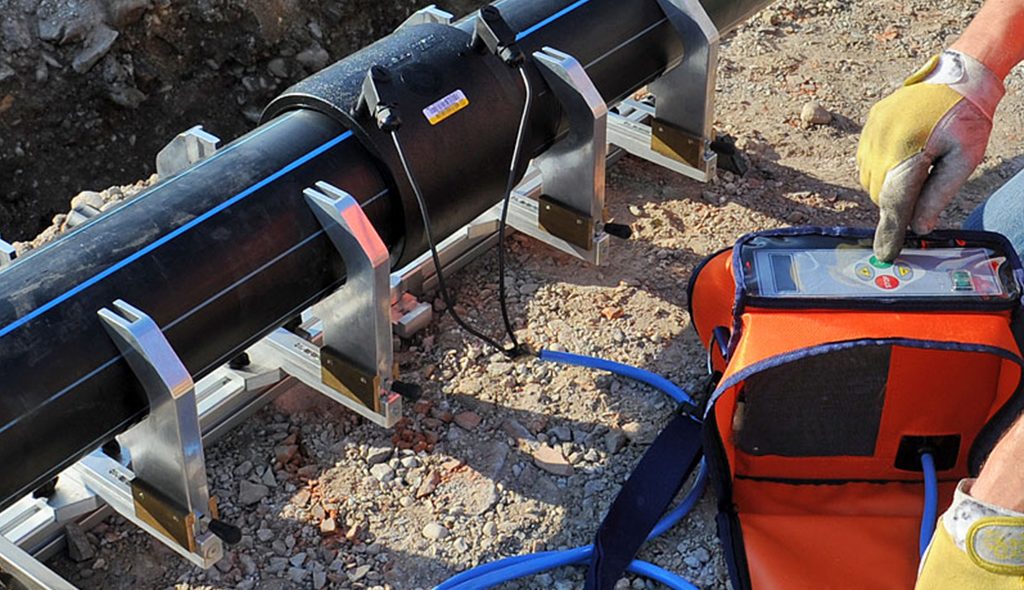

HDPE Electrofusion Fittings are specialized components used in high-density polyethylene (HDPE) piping systems for joining pipes and other HDPE components together. These fittings utilize a welding process with a built-in electric heating source to fuse and create strong, leak-proof joints.
Electrofusion is a technique of interconnecting MDPE, HDPE, and other plastic pipes that use specific fittings with built-in electric heating sources to fuse the junction. Electrofusion welding is advantageous since it does not necessitate the operator’s use of hazardous or complicated equipment.
Material: HDPE Electrofusion Fittings are made from high-density polyethylene, a thermoplastic known for its
durability, flexibility, and resistance to corrosion and chemicals. This makes them ideal for use in various industries
such as water supply, gas distribution, mining, and industrial applications.
Electrofusion Welding: The joining process involves the use of specialized fittings equipped with embedded
heating elements. When an electric current is applied, the heating elements heat up and melt the HDPE material
in the fitting and the pipe. As the melted material cools down, it forms a strong, homogenous bond, creating a leakproof
joint.
Versatility: HDPE Electrofusion Fittings come in a wide range of sizes and configurations to accommodate
different pipe diameters, angles, and connection types. This versatility allows for the creation of complex piping
systems with precise fittings tailored to specific project requirements.
Application: These fittings are commonly used in various applications including water and wastewater treatment
plants, municipal water distribution networks, industrial process piping, irrigation systems, and gas distribution
networks. They are particularly favored in projects where reliability, longevity, and leak-free performance are
crucial.
Advantages: HDPE Electrofusion Fittings offer several advantages over traditional joining methods such as
solvent welding or mechanical couplings. These include faster and easier installation, superior joint strength,
resistance to corrosion and chemical attack, and the ability to accommodate thermal expansion and contraction.
Overall, HDPE Electrofusion Fittings play a vital role in modern piping systems, offering a reliable and efficient
solution for joining HDPE pipes and ensuring the integrity and longevity of the overall infrastructure.

Electrofusion welding is a specialized technique used to join plastic pipes and fittings, particularly those made from
materials like high-density polyethylene (HDPE). Here are the general steps involved in electrofusion welding:
1. Preparation:– Ensure that the pipes and fittings to be joined are clean, dry, and free from any contaminants. – Check that the ends of the pipes and fittings are clean, straight, and properly prepared for welding.
2. Fitment:- Slide the electrofusion fitting onto one end of the pipe to be joined. Ensure that it is properly aligned and seated according to manufacturer guidelines.
3. Clamping:- Use clamps or other appropriate fixtures to secure the pipes and fittings in place, ensuring they are firmly held together with no movement during the welding process.
4. Electrofusion Machine Setup:– Set up the electrofusion welding machine according to the specifications provided by the manufacturer.- Ensure that the machine is properly calibrated and that all settings, including voltage, current, and welding time, are adjusted as per the requirements of the specific electrofusion fitting and pipe being used.
5. Heating:– Connect the electrofusion welding machine to the fitting, making sure that the electrodes are in contact with the heating element within the fitting. – Activate the welding process, which will cause the electrodes to heat up and melt the plastic material at the interface between the fitting and the pipe.
6. Cooling:– Allow the molten material to cool and solidify, forming a strong bond between the fitting and the pipe. This
typically takes a few minutes, depending on the size and thickness of the materials being welded.
7. Final Inspection:– Once the welding process is complete and the joint has cooled down, visually inspect the weld to ensure it is uniform, smooth, and free from any defects or irregularities. – Conduct any required testing or pressure checks to verify the integrity and strength of the welded joint.
8. Documentation:– Record relevant details of the welding process, including welding parameters, inspection results, and any other pertinent information, for future reference and quality assurance purposes.
Following these steps carefully and adhering to manufacturer guidelines and industry best practices will help ensure a successful electrofusion welding process and the creation of strong, reliable joints in plastic piping systems.
WhatsApp us